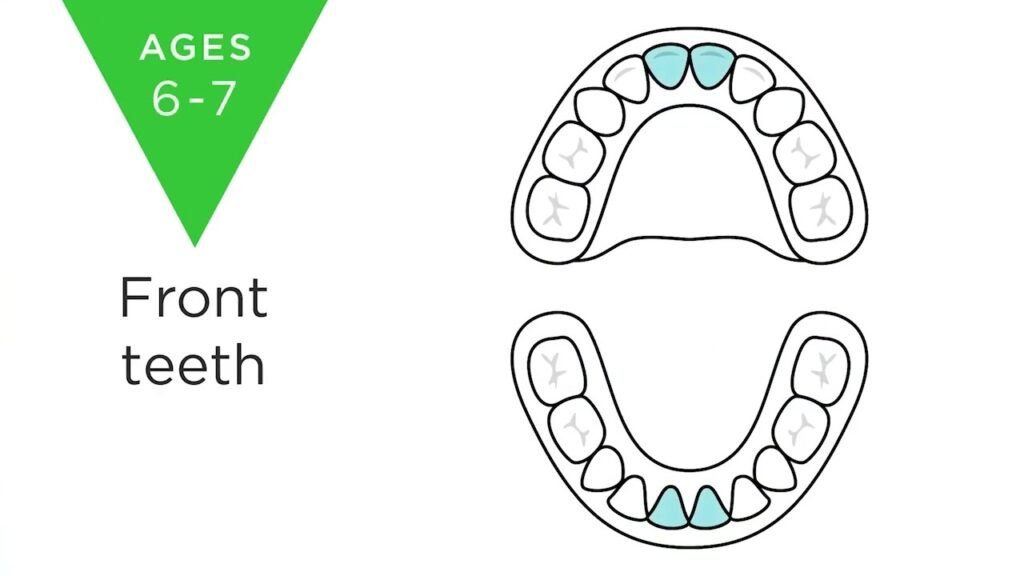The Order of Tooth Loss: What to Expect

Losing a tooth is a common rite of passage for many children, with the order of tooth loss following a predictable pattern. Understanding when and why your child's baby teeth fall out can help alleviate any concerns and ensure proper dental care. In this article, we will explore the typical sequence of tooth loss in children and provide helpful tips for maintaining healthy smiles along the way.
What is the typical order of tooth loss in children?
In children, the typical order of tooth loss follows a pattern starting with the lower central incisors, followed by the upper central incisors. Next, the lateral incisors are typically lost, followed by the first molars, canines, and finally the second molars. This sequence of tooth loss usually occurs between the ages of 6 and 12, as the primary teeth are gradually replaced by permanent teeth.
Understanding the typical order of tooth loss in children can help parents and caregivers anticipate when their child may be going through this natural process. By knowing the sequence of tooth loss, parents can better prepare for potential discomfort or changes in their child's eating habits. Regular dental check-ups can also help monitor the transition from primary to permanent teeth and ensure proper dental care throughout this important stage of development.
At what age do children usually start losing their baby teeth?
Children usually start losing their baby teeth around the age of 6 or 7, although this can vary from child to child. This process, known as "teething," typically begins with the lower front teeth and progresses to the back molars. As the adult teeth begin to push through the gums, the baby teeth will naturally loosen and fall out, making way for the permanent teeth to take their place. This is an important milestone in a child's development and is often accompanied by excitement and anticipation.
A Guide to Your Child's Growing Smile
As a parent, it's important to understand the journey of your child's growing smile. From their first tooth to their adult teeth, each stage is crucial in their dental development. By following a few simple tips and guidelines, you can ensure your child maintains a healthy and beautiful smile for years to come.
Start by establishing a consistent oral hygiene routine early on. Encourage your child to brush their teeth twice a day and floss regularly to prevent cavities and gum disease. Make sure they visit the dentist regularly for check-ups and cleanings to catch any potential issues early. By instilling good habits from a young age, you can set your child up for a lifetime of excellent oral health.
As your child's smile continues to grow and evolve, be sure to monitor their dental development closely. Keep an eye out for any signs of misalignment, crowding, or other issues that may require orthodontic treatment. By staying proactive and addressing any concerns early on, you can help your child achieve a straight, healthy smile that they can be proud of. Remember, a beautiful smile is not just a reflection of good dental care, but also of confidence and self-esteem.
Understanding the Natural Process of Tooth Loss
Losing teeth is a natural process that occurs as we age, but understanding the reasons behind it can help us take better care of our oral health. As we get older, our teeth may become weaker due to wear and tear, leading to decay or damage that eventually results in tooth loss. Maintaining good oral hygiene, such as regular brushing and flossing, can help prevent tooth loss and preserve our natural smile for longer.
By understanding the natural process of tooth loss, we can also be more proactive in seeking dental care when needed. Regular check-ups with a dentist can help identify potential issues early on and prevent further tooth loss. Additionally, making healthy lifestyle choices, such as avoiding sugary foods and quitting smoking, can also play a significant role in preserving our teeth as we age. So, let's take the time to educate ourselves on the natural process of tooth loss and take the necessary steps to maintain a healthy and beautiful smile for years to come.
Preparing for Your Child's Dental Milestones
As a parent, it's important to stay informed about your child's dental milestones to ensure their oral health is on track. From the eruption of their first tooth to their first dental visit, being prepared and proactive can set the foundation for a lifetime of healthy smiles. Start by establishing a good oral hygiene routine at home, scheduling regular dental check-ups, and being attentive to any changes or concerns. By staying proactive and informed, you can help your child achieve and maintain a healthy smile as they grow.
Navigating the Journey of Losing Baby Teeth
Losing baby teeth is a rite of passage for children, marking the transition from infancy to adolescence. As parents, it is important to navigate this journey with patience and understanding, as it can be both exciting and emotional for our little ones. Encouraging good oral hygiene habits and celebrating each lost tooth can make the experience more enjoyable and memorable for the whole family. Remember, this is just the beginning of your child's dental journey, so cherish these moments and embrace the changes that come with growing up.
In understanding the order of tooth loss, it becomes evident that the process is a natural part of human development. By recognizing the typical sequence in which primary and permanent teeth are shed, individuals can feel more informed and prepared for this normal aspect of oral health. Ultimately, knowing the order in which teeth are lost can empower individuals to take proactive steps in maintaining their dental well-being as they age.